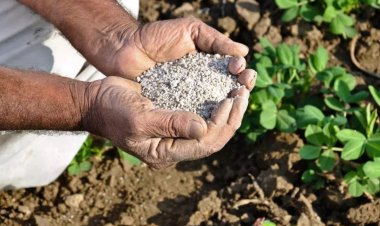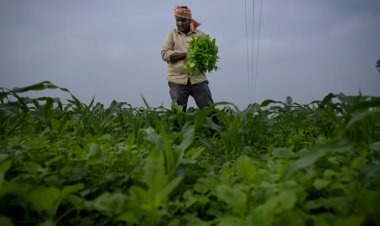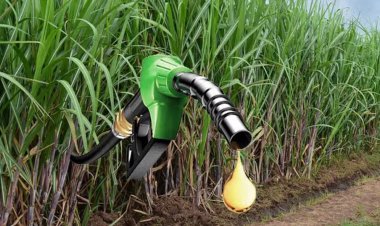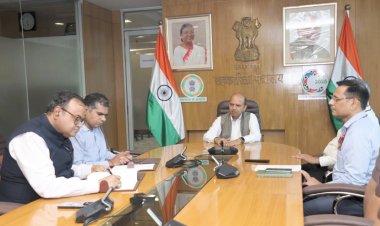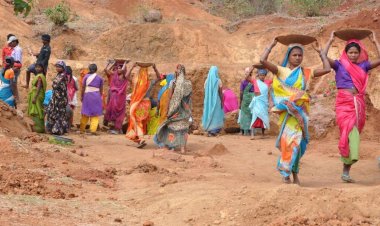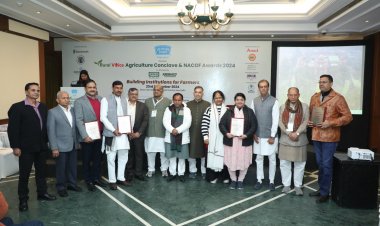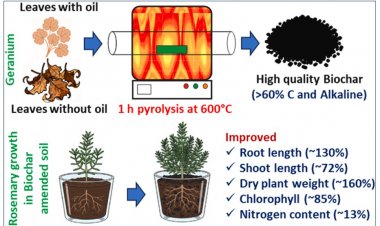Economic self-reliance necessary for agriculture sector and farmer that provide self-reliance of food security to country
The foodgrain production in the country crossed 300mn tonnes last year. This shows how the agriculture sector and the farmers have contributed to the country in 75 years of independent India. How significant food security is for a country has been experienced by the countries of the world and even by our neighbour Sri Lanka since the Russia-Ukraine war started in February this year.
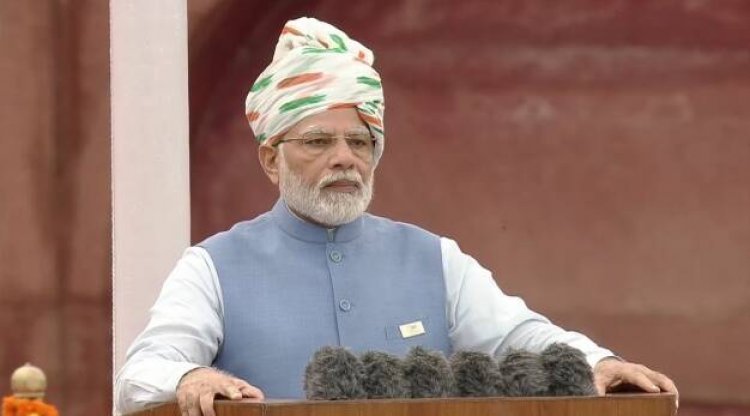
According to the first Census conducted after Independence, the population of India was 361.1mn. The foodgrains production that year was merely 50.82mn tonnes. Although no census was conducted in 2021, yet the country’s population is estimated to be 1.4bn. Thus, the population of the country has quadrupled since Independence. A country that was dependent on foodgrain imports in its initial decades not only provides food security to this large population now but is also being counted among the world’s major food exporters. The foodgrain production in the country crossed 300mn tonnes last year. This shows how the agriculture sector and the farmers have contributed to the country in 75 years of independent India. How significant food security is for a country has been experienced by the countries of the world and even by our neighbour Sri Lanka since the Russia-Ukraine war started in February this year.
The achievement is not limited only to foodgrain production. We have achieved major successes in areas ranging from milk production to production of cash crops like cotton to even sugar production. Not that all this came too easy. At the time of Independence, although resources were not there in abundance, there was a vision for these achievements. And the government implemented policies made on this vision that bore results. For instance, only 18 per cent of the agricultural land in the country was irrigated in 1951. The foodgrain productivity was only 522kg per hectare and foodgrains were being produced on a total area of 97.32 lakh hectares. The area under foodgrains production has now gone up to 129.34 lakh hectares, but thanks to the productivity of 2.386 tonnes per hectare, the foodgrains production reached 308.6mn tonnes this year. It was due to the constant increase in foodgrains production that for the first time the country did not undergo a hunger crisis even during the severe Covid-19 pandemic in the country. The reason: the government had sufficient foodgrains available. Earlier, the country had to suffer horrific human tragedies during the famines in pre-Independence Bengal and later in Bihar.
The agricultural prosperity today is a result of how the government brought in public investment in the agriculture sector post-Independence. It was during Jawaharlal Nehru’s prime ministerial tenure that agricultural universities were established in Pantnagar, Hyderabad and Bhubaneswar. Agricultural universities and research institutes continued to be developed. Investment was made on research in universities and its requisite infrastructural facilities. Besides, irrigation facilities were enhanced with dams like Bhakra Nangal, Hirakud and Nagarjuna Sagar. Given this background, when work started in the country on Green Revolution through high-yielding varieties (HYVs) of wheat and paddy in the Sixties, areas with irrigation facilities in Punjab, Haryana, Western Uttar Pradesh, Tamil Nadu and Andhra Pradesh started yielding immediate results and provided self-reliance in foodgrains to the country. Later, its extent expanded to other parts of India besides West Bengal, and Central and Western India.
Besides investing in agricultural research and development, systems were developed for providing input material to the farmers for new species and for public procurement. Work was done on increasing irrigation facilities. As a result, irrigated agricultural land went up from 18 per cent in 1951 to 54.32 per cent in 2018-19. It is a separate issue that the speed at which work was done on increasing the irrigated area has slowed down in recent decades. For instance, while the irrigated area in the country was 53.06 per cent in 2014-15, it has gone up to only 54.32 per cent up to 2018-19.
The Minimum Support Price (MSP) mechanism came into existence and storage facilities were established by setting up the Food Corporation of India (FCI), Central Warehousing Corporation (CWC) and State Warehousing Corporations. Besides irrigation, fertilizers were necessary for the new crop varieties. While fertilizer factories were established for this in the public sector on the one hand, cooperatives like IFFCO came into existence on the other. For decades, Primary Agricultural Credit Societies (PACS) played a key role in providing institutional credit to the farmers. At one point in time, the share of cooperatives in credit to the farmers was as high as 40 per cent. Also, it was in this phase of food security that mandis (markets) were established under the Agricultural Produce Market Committee (APMC) Act and investments were made in them. It was during this period that Operation Flood was launched and institutions like the National Dairy Development Board (NDDB) were established that helped increase milk production across the country on the Amul model.
So far so good because these achievements benefited the country and its citizens. But the current situation of agriculture cannot be equated with these achievements. Productivity has stagnated in the regions of the Green Revolution. Public investment in agriculture has constantly gone down. The situation is quite weak in terms of spending on research. We are constantly falling behind when compared to the technological application and research in agriculture in developed countries. The farmer’s income continues to be weak and he has lost social status considerably because the gap between the income of people employed in other sectors of the economy and in public services and that of the farmers has widened fast. No matter what the government may say, the truth is that the gap between the income and lifestyle facilities in the rural areas and those in the urban areas has considerably widened. Which is leading to a yawning gap in the educational and health facilities.
If there is the peril of climate change on the one hand, there has been a deterioration in soil health and the quality of natural resources like water on the other. We have seen the maximum impact of climate change on agriculture in the agricultural year 2021-22. There was an excess of rainfall for five consecutive months from September to January. And then in mid-March, there was a surge in temperature, which resulted in a sharp decline in wheat crop production. On the other hand, the mustard crop was affected in the flowering phase due to an excess of rainfall in December and January, which led to a decline in its production, too. Earlier, heavy rains and floods in the Kharif season caused massive losses to vegetable crops like onion and tomato. Despite all this, the government has claimed a growth rate of 3 per cent in agriculture, but this is far from ground reality.
The question is: Are we working on reducing the impact of climate change? Are we increasing the investment in the research necessary for this? Well, nothing of this sort can be seen at present. The agricultural scientists in the country have for long been demanding spending 1 per cent of the agriculture GDP on research, but the government is not doing so. In such a scenario, going by the serious challenge that climate change is about to pose to farmers and the agriculture sector, it is imperative to take timely steps.
The farmer’s costs are going up. Not only is the return on investment (RoI) quite low in agriculture but also the rate of capital formation in agriculture is very low due to the lack of public investment. The kind of investment we got to see in the infrastructure for agricultural marketing in the country in the Sixties, Seventies and Eighties has almost stopped now. Those who see substitutes like digital marketing and eNAM as a solution to this problem need to understand the reality. Therefore, it is most important to make an increase in public investment in the changed circumstances; private investment cannot compensate for this. The private sector may invest in the case of a few select crops but there is no substitute for public investment when it comes to major crops.
The agriculture sector in the country needs a vision to be worked upon holistically. Merely increasing the MSP of a few crops or reactive steps taken in the aftermath of fluctuation in prices cannot improve the future of agriculture and the farmers. Even today, more than 46 per cent of the people are employed in agriculture. According to the figures available, of the country’s 361.1mn population in 1951, the rural population accounted for 82.7 per cent. There were 69.9mn farmers in all in the country. On the other hand, according to the 2011 Census, the number of farmers reached 118.8mn, which is a result of the size of the holding getting smaller. Despite this, majority of the population in the country is still employed in agriculture even as the contribution of the sector to the Gross Domestic Product (GDP) in 2021-22 is 18.6 per cent. Also, economic data prove that despite having a growth rate of more than 6 per cent, the manufacturing sector witnesses an employment growth of even less than one per cent. That is, the dream of shifting workers from agriculture to industrial units is also ending now. Given this state of affairs, a new vision is the need of the hour.
Employment opportunities will have to be created within the agriculture and allied sectors. As NITI Aayog Member Prof. Ramesh Chand says, we will now have to work on the concept of ‘farm as a factory’. We will have to work on the idea of converting the farm into a factory through the use of the latest techniques. At a time when we are steeped in the noise of ‘new India’, why we are not working on ‘new agriculture’ is a big question in itself. In order to face the current challenges in the agriculture sector, a new approach is required with its focus on the economic self-reliance of farmers.
Politicians in the decades after Independence realized the Green Revolution dream through their vision and thinking, as a result of which the country could attain in real terms self-reliance in food security for a population that has grown four times since. Through another round of such visionary thinking, our aim should be to attain the target of the farmer being financially self-reliant. A major change in the status quo is required for this; merely making makeshift decisions in the name of change will not do.



 Join the RuralVoice whatsapp group
Join the RuralVoice whatsapp group

















